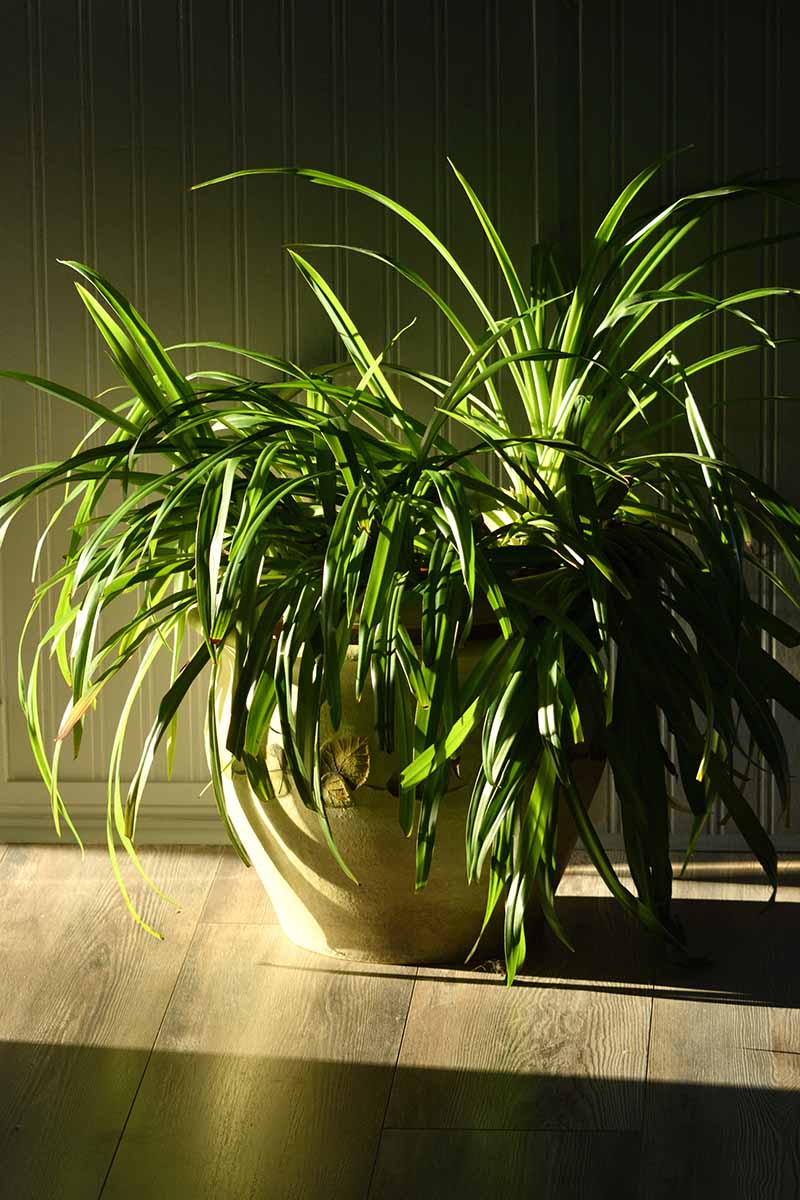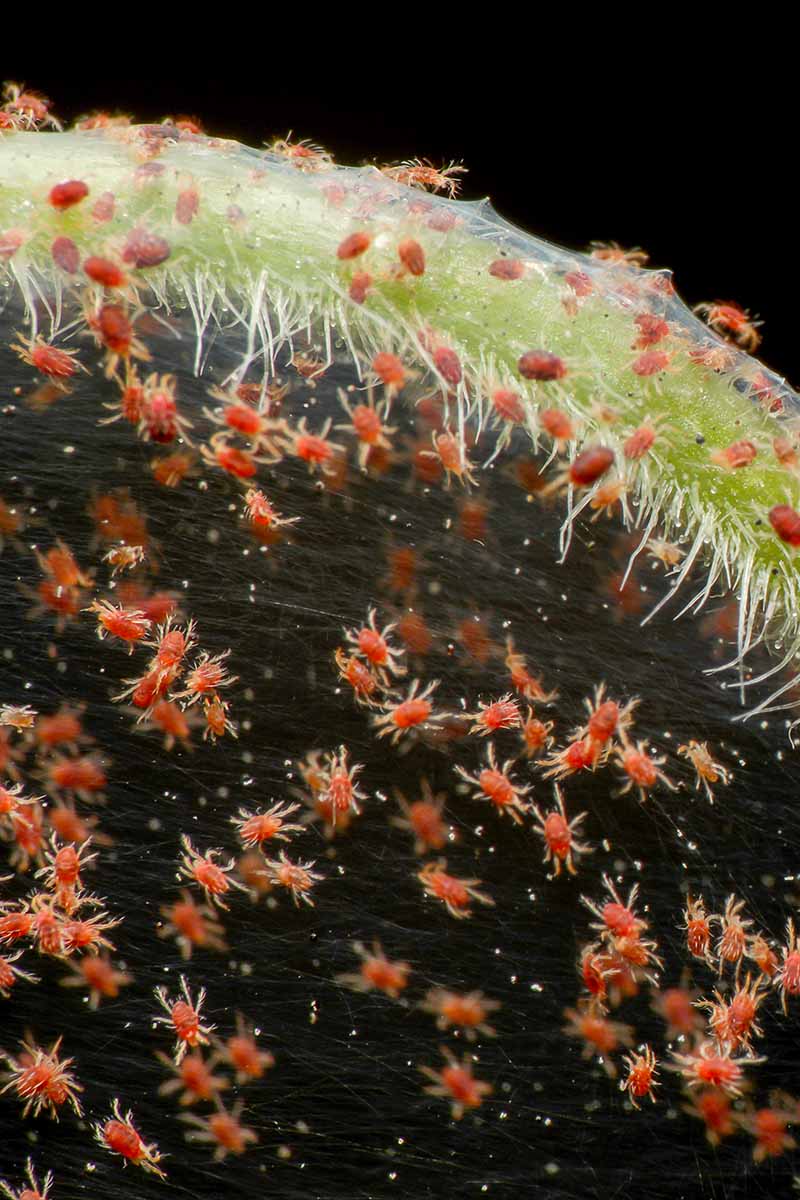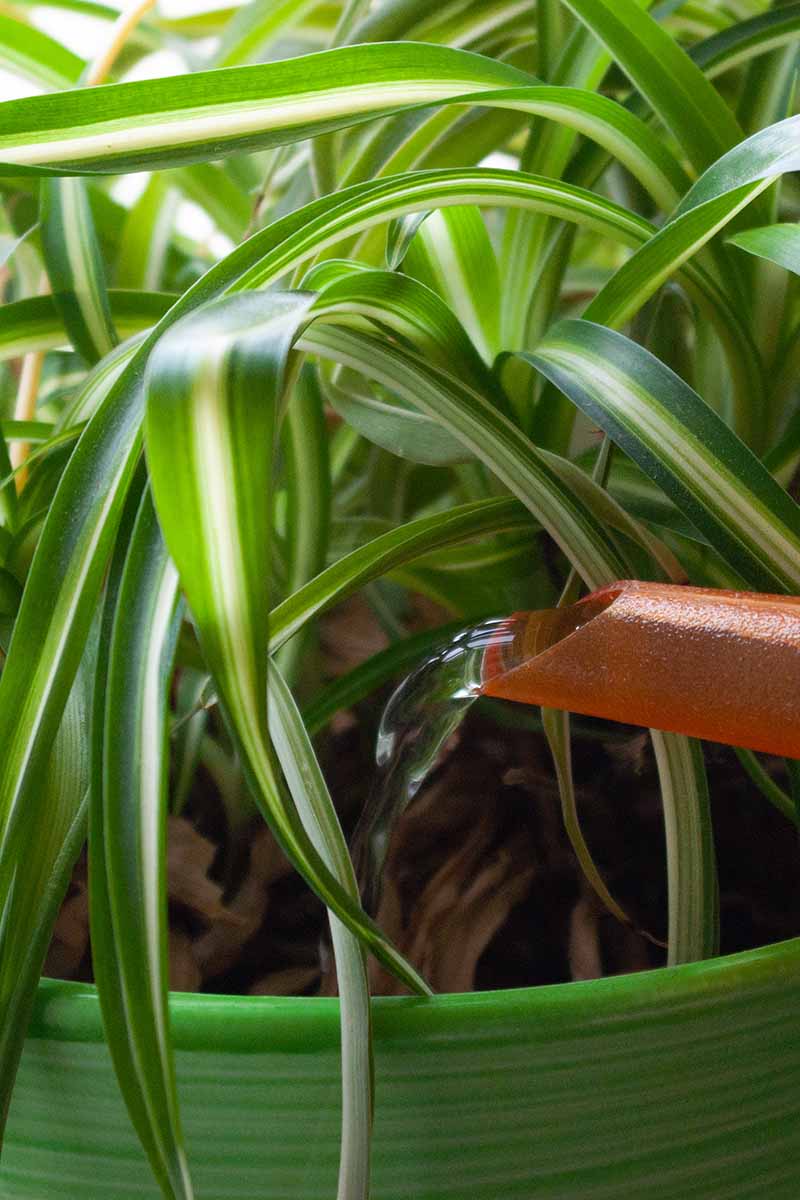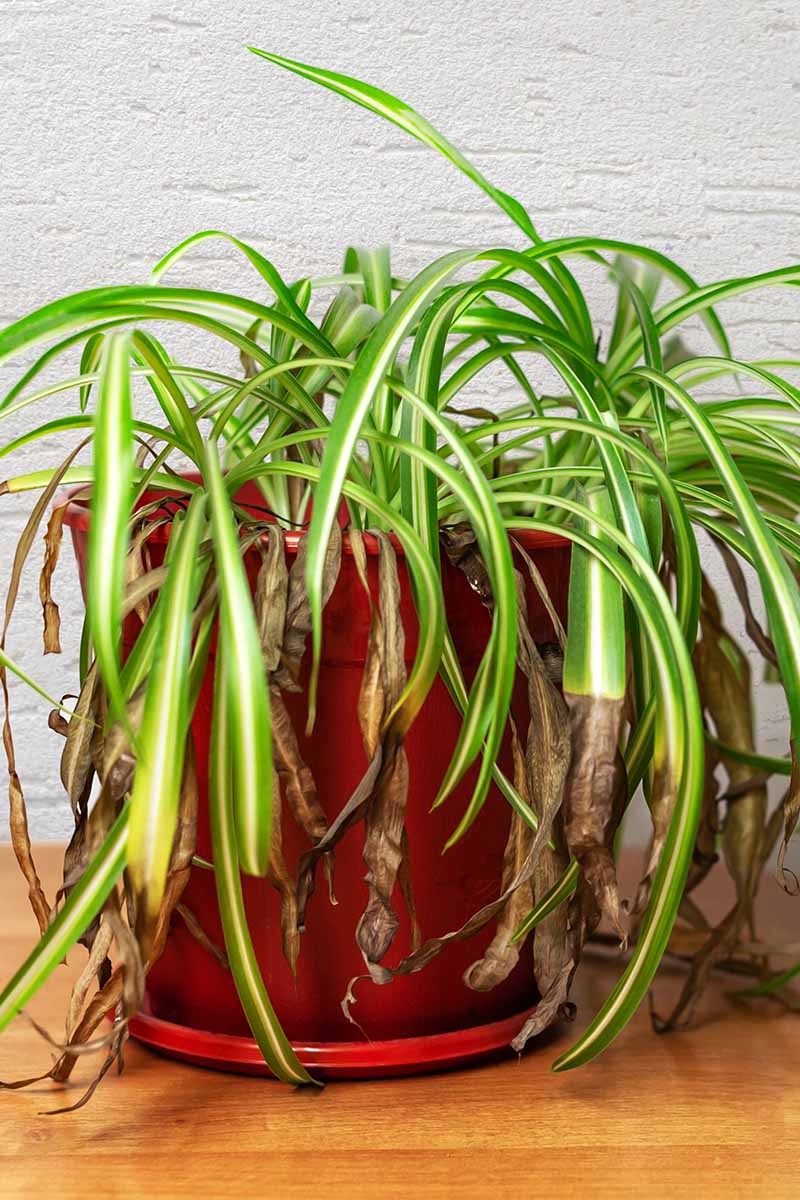I’m not sure about the name because I don’t like spiders very much, but I do know that spider plants are great.
We link to vendors to help you find relevant products. If you buy from one of our links, we may earn a commission.
Additionally, if the leaves on your specimen turn yellow, you need to quickly figure out what’s wrong and fix it.
There are seven common causes of leaf yellowing in spider plants. Are you ready to find some solutions? Here’s a quick preview of everything we’ll cover up ahead:
Spider plants are one of the most popular houseplants loved for their easy care fast growth, and trailing babies. But even hardy spider plants can develop issues. Yellowing leaves are a common spider plant problem.
Yellow foliage can have various causes, ranging from cultural issues like improper watering to pest attacks. Fortunately, yellow leaves can often be reversed with a few simple fixes. This article explores the reasons for spider plant yellow leaves and provides tips to restore your plant to vibrant green health.
Overwatering – The Most Common Cause of Yellow Leaves
Excessive watering tops the list of culprits when spider plant leaves turn yellow. These tropical plants thrive with consistent moisture but soggy soil quickly damages roots.
Overwatering impacts spider plants in two ways
-
Root Rot – Wet soil promotes fungal root rot. Damaged roots cannot take up nutrients and water, causing leaves to yellow from deficiency.
-
Oxygen Deprivation – Saturated soil prevents air penetration. Without oxygen, roots suffocate, disrupting nutrient absorption and leading to yellowing foliage.
Fixing Overwatering Issues
-
Allow the soil to dry out completely between waterings. Wait until the top few inches are dry before rewetting.
-
Repot in fresh, well-draining soil to prevent waterlogging. Add perlite or bark chips to improve drainage.
-
Water less frequently. Aim to wet only the top half of the pot. Let it partially dry before the next drink.
-
Use self-watering pots with wicks and reservoirs. These provide a steady moisture supply without oversaturating the roots.
Temperature Stress – Hot or Cold Can Cause Yellowing
Spider plants thrive in average room temperatures between 65°F to 80°F. Temperatures outside this range can induce leaf yellowing.
Cooler temperatures below 60°F slow plant processes. Prolonged chilling stresses spider plants, causing yellowing, leaf drop, and stunted growth.
Hot temperatures above 80°F accelerate transpiration. The plant struggles to take up enough water to offset the increased loss through leaves. Heat stress manifests as wilting, bleached foliage, and yellow lower leaves.
Fixing Temperature Issues
-
Move plants away from hot windows, radiators, or AC vents causing heat or cold stress.
-
Supplement heating or cooling to maintain the ideal 60°F – 80°F range if needed.
-
Avoid drastic temperature fluctuations which shock spider plants.
Inadequate Light – Lack of Sunlight Yellows Leaves
Native to tropical forests, spider plants need bright filtered light. Insufficient light disrupts photosynthesis, draining energy reserves. Yellow lower leaves indicate light starvation.
Indirect sunlight through sheer curtains works well. Avoid direct sun which burns the leaves. If light levels are too low, foliage yellows and growth slows.
Fixing Insufficient Light Issues
-
Place spider plants near bright sunny windows. South or West exposure is ideal.
-
Install grow lights to supplement natural lighting. LED plant lights work well.
-
Rotate plants periodically to equalize light exposure.
-
Prune congested growth to allow better light penetration.
Excess Light – Direct Sun Bleaches Spider Plant Leaves
While they need bright light, too much direct sun can also damage spider plants. Hot mid-day sun shining directly on the leaves bleaches chlorophyll, causing yellow spots and margins.
Check for leaf scorch if yellowing occurs only on the side facing the window. Bleached areas may eventually turn brown and crispy.
Fixing Excess Light Issues
-
Draw sheer curtains or use tinted glass to filter intense sunlight.
-
Move plants further away from South or West windows receiving direct sunlight.
-
Turn or rotate plants frequently to prevent one-sided leaf bleaching.
-
Shade with taller plants or lattices outside to protect from sun damage.
Low Humidity – Dry Air Yellows Spider Plant Tips
Spider plants prefer 40% to 50% relative humidity, well above most homes. Low humidity draws moisture from leaf tips, causing browning and yellowing.
Keep an eye out for desiccated leaf tips combined with yellowing. Humidity below 30% necessitates intervention.
Fixing Dry Air Issues
-
Mist foliage frequently or place pots on pebble trays.
-
Run a humidifier nearby to raise ambient humidity.
-
Move plants to naturally humid spots like bathrooms and kitchens.
-
Grow spider plants in enclosed terrariums to provide high, stable humidity.
Nutrient Deficiencies – Lack of Fertilizer Yellows Old Leaves
Spider plants need regular feeding to look their best. Without adequate nutrients, older leaves progressively yellow from the tips backward. New growth may be stunted.
These heavy feeders respond well to monthly fertilization in the growing season using a balanced diluted liquid fertilizer or compost tea.
Fixing Nutrient Deficiencies
-
Apply a balanced liquid fertilizer monthly during spring through summer.
-
Top-dress annually with compost or worm castings.
-
Check soil pH and amend if needed – spider plants prefer a slightly acidic pH of 6.0-6.5.
-
Repot in fresh potting mix every 2-3 years to replenish nutrients.
Pest Problems – Spider Mites And Mealybugs Cause Yellow Stippling
Spider mites, aphids, mealybugs, and other sap-sucking pests can infest spider plants. They extract fluids and leave yellow stippled spots in their wake. Sticky honeydew and visible insects confirm pest activity.
Isolate and wash off pests with diluted neem oil. Apply multiple treatments a week apart to control heavy infestations. Prevent pests by maintaining plant health.
Fixing Pest Issues
-
Isolate and treat infested plants promptly to prevent spread.
-
Check closely for signs like webbing, honeydew, and bugs which indicate pests.
-
Spray diluted neem oil or insecticidal soap to control mites and insects.
-
Apply sticky traps near plants to catch adult pests.
-
Maintain plant vigor through proper care to deter pests.
Other Causes of Spider Plant Yellow Leaves
-
Old age – Lower leaves naturally senesce and yellow on mature spider plants. Remove if unsightly.
-
Harsh repotting – Root damage from rough handling can cause transplant shock, yellowing leaves.
-
Overcrowding – Congested roots compete for water and nutrients. Repot promptly.
-
Tap water chemicals – Chlorine and salts accumulate, damaging roots and leaves. Use filtered water.
-
Abrupt location changes – Moving to drastically different light or humidity stresses plants. Transition gradually.
How to Prevent Spider Plant Leaves From Turning Yellow
Consistent care tailored to your conditions is key to prevent yellow spider plant leaves. Follow these tips for healthy, vibrant foliage:
-
Water thoroughly only when the top inch of soil is dry.
-
Fertilize monthly in spring and summer with a balanced liquid fertilizer.
-
Provide bright, indirect light. Rotate plants for even exposure.
-
Keep humidity above 40% and temperates between 65°F-80°F.
-
Inspect regularly for pests. Isolate and treat infections early.
-
Repot when rootbound into well-draining soil with added perlite or bark.
Yellowing spider plant leaves generally indicate cultural issues, although pests and diseases may also be responsible. Address problems like overwatering, low light, temperature extremes, and pests to restore leaf color. With a few adjustments, your spider plant will soon regain its verdant luster!

Leaf Yellowing in Spider Plants: 7 Common Causes
To begin, it’s important to make sure we know what we’re looking at. There are two kinds of yellowing leaves:
The first are brighter yellow, dry, and crisp leaves. The second are pale, mushy ones. Keep an eye out for the difference. Being able to tell them apart will help you find the cause.
Some spider plants have yellow stripes or variegation on their leaves, but that’s not the color we’re talking about here.
Think you’ve spotted the type of color change that signals a problem? Let’s take a closer look!
As they age, the older leaves at the base will turn yellow, brown, and then die. These leaves tend to be brighter in color and dry.

This isn’t a problem as long as there aren’t many dying leaves and no other leaves inside the plant are turning yellow. Just trim them off.
There’s probably nothing wrong with the plant if you see a lot of dying leaves spread out all over it. Continue reading to figure out what the issue is.
Insufficient iron uptake is one of the most frequently seen nutrient deficiencies in all types of cultivated plants.
Leaf chlorosis is its most distinctive symptom. This is when the leaves turn yellow but the veins stay green. Sometimes, the leaves might even turn white.
Young leaves will be intensely yellow or even white, and growth will be stunted significantly. The leaves will generally have a normal texture, neither dry nor soggy.
If you’ve maintained a regular repotting and fertilizing routine, this shouldn’t be a problem.
But if you haven’t done those usual tasks, you might need to add some iron and promise to be more careful in the future!
The best way to do this is to sprinkle blood meal onto the soil.
Down to Earth has a great option available, and it comes in a compostable box in various sizes which you can purchase at Arbico Organics.
Side dress the pot or mix with water for application, following the manufacturer’s directions. Then, be sure to fertilize regularly, but not too often. We’ll discuss that shortly.
If your specimen is in direct sunlight and it’s turning yellow, it’s likely receiving too much sun.
This is one of those times when the leaves will be yellow and dry, or at least have a normal texture. If they’re mushy and pale, overexposure isn’t the problem.

Moving the pot farther away from the light source is an easy way to fix this problem, which is a good one to have.
The leaves that have already turned won’t recover, but you can clip them off. Healthy new growth will come in with the appropriate color.
Another great thing about spider plants is that they don’t need much care, and that includes feeding them.
When you water your plants, it’s easy to get into the habit of adding fertilizer to the can every time.
While this is great for some houseplants, it’s not so great for plants like spider plants that don’t need as much food.
You shouldn’t feed them at all in the winter, and you should only use an all-purpose liquid fertilizer every other month.
More often should be enough if you choose something very mild, with NPK numbers in the single digits. Once a month should be enough.
Dr. Earth Pump
Also, if you put it on the soil directly, you don’t need to mix it with water. You can put it in your watering can if you want to, though. I love a product that makes life easier.
If you want to go the easy route, bring home a 16-ounce container from Arbico Organics.
After making sure the plants get enough water and light and the leaves are crisp and dry, look for pests.

Many common pests feed on the sap of plants, drawing it out by piercing the flesh and sucking. This drains the foliage of nutrients and moisture, causing it to turn a stippled yellow.
Watch for aphids, mealybugs, and spider mites. All of these pests are very common on houseplants. And all of them are usually pretty easy to deal with, using neem oil.
If you don’t already have neem oil in your gardening toolkit, you should remedy that ASAP. This stuff is pretty useful!.
Arbico Organics carries Bonide brand neem oil in quart- or gallon-size ready-to-use bottles, or pint-size concentrate.
Too Much Water
I’ll admit that I’m guilty of this now and then. I get into a routine and water all my houseplants at the same time each week.
But you really should take the extra step and stick your finger in the soil before watering.

Is this something you always do? If not, you might water spider plants and other plants that don’t need as much water.
There is no extra substrate needed for these plants to grow in water, which makes some gardeners think they can handle a lot of water.
Actually, they do better if you let them dry out a bit between watering when you plant them in pots with potting soil.
The problem doesn’t just stem from providing water too often. That can also happen if the pot doesn’t drain well, and it happens a lot with plants that have roots that are squished together.
If the leaves on your spider plant are turning yellow and getting soft and wilted, you should check to see if the soil is too dry. Does it feel any wetter than a well-wrung-out sponge?.
If it does, it’s too wet. It should only feel that moist if you just watered your plant.
After you water the soil, let it dry until at least the top inch of soil feels dry.
You should only water when the soil is at least 50% dry, but 75% dry is even better. You can use a moisture meter to make sure of this.
I don’t have any scientific proof, but I think the hardest part of growing houseplants is making sure they get enough water.
Maybe it’s just because of my own experience, but until I learned how to use a moisture meter or my finger to test the soil, I was always either giving my plants too much or too little water.

The leaves will turn brown and yellow if the plant isn’t getting enough water, but they won’t be pale and soft. The leaves will start turning crispy at the tips before moving down the rest of the leaf.
In this case, it’s not just the leaves that will give you a heads up. Look at the soil. If it’s pulling away from the side of the pot, it needs more moisture.
You should water them every so often, but it’s better to be safe than sorry and give them too little water than too much. These plants tolerate drought better than sogginess.
Wait until the soil is dry to your second knuckle before watering again. The soil should be three-quarters dry, or about 75 percent.
So it won’t quite be totally dry before you water again, but it shouldn’t have much moisture left.
What to do when spider plant leaves turn yellow ?
FAQ
How do you fix yellow leaves on a spider plant?
What does an overwatered spider plant look like?
How often should you water a spider plant?
Will yellow leaves turn green again?
How do you irrigate a spider plant with yellow leaves?
Use rainwater or distilled water when irrigating spider plants. A spider plant with yellow leaves may also be suffering a nutritional deficiency, but if you fertilize and change the soil annually, it is more likely a disease. Check to see if the container the plant is in drains freely.
How to prevent Spider Plant yellow and Droopy?
You can do a few things to prevent spider plant yellow and droopy. First, make sure you are fertilizing your plant regularly. In the spring and summer, it is recommended to use a balanced 20-20-20 NPK fertilizer once or twice a month. Spider plants need a consistent supply of nutrients to stay healthy.
Why is my Spider Plant turning yellow?
While Spider Plants are adaptable to various environments, they hail from subtropical regions and thus prefer higher humidity. If the air around your plant is too dry, the plant can experience dehydration, leading to yellow leaves. Fix: To increase humidity, consider placing your plant in a bathroom or kitchen where humidity tends to be higher.
What does a yellow spider plant look like?
The first are brighter yellow, dry, and crisp leaves. The second are pale, mushy ones. Pay attention to the difference – being able to discern between the two will help you narrow down the cause. Some spider plants naturally have yellow stripes or variegation, but that’s not the kind of coloring we’re talking about in this guide.
What happens if a spider plant gets too much light?
If your spider plant is exposed to too much light, its leaves will become yellow and bleach out. This could signify that it’s receiving too much direct sunlight or being kept in an area with too much artificial light.
How to take care of a spider plant?
Start with an hour or two in the beginning. If the plant goes through environmental stress, then we will notice the leaves of the spider plant turning yellow. As the plant is already suffering, we should avoid stressing the plant. Give the sturdy spider plant some time to adapt and fight the situation.
- The Ultimate Guide to Growing Strawberries in Raised Beds - August 8, 2025
- No-Dig Garden Beds: The Easiest Way to Grow a Beautiful Garden - August 6, 2025
- How to Protect and Preserve Wood for Raised Garden Beds - August 6, 2025
